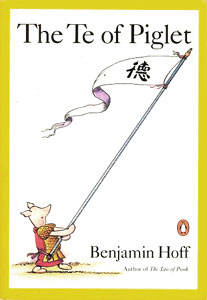
Tigger is a fictional tiger character originally introduced in the 1928 story collection The House at Pooh Corner, the sequel to the 1926 book Winnie-the-Pooh by A. A. Milne. Like other Pooh characters, Tigger is based on one of Christopher Robin Milne's stuffed toy animals. Tigger appears in the Disney cartoon versions of Winnie the Pooh and has also appeared in his own film.
Christopher Robin is a character created by A. A. Milne. He appears in Milne's popular books of poetry and Winnie-the-Pooh stories and is based on Christopher Robin Milne, the author's son. The character has subsequently appeared in Disney cartoons.
Eeyore is a character in the Winnie-the-Pooh books by A. A. Milne. He is generally characterized as a pessimistic, gloomy, depressed, anhedonic, old grey stuffed donkey who is a friend of the title character, Winnie-the-Pooh.
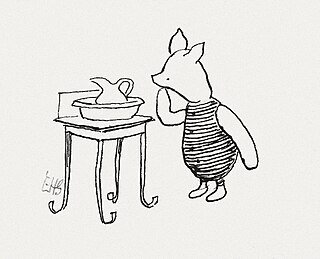
Piglet is a fictional character from A. A. Milne's Winnie‑the‑Pooh books. Piglet is Winnie‑the‑Pooh's closest friend amongst all the toys and animals featured in the stories. Although he is a "Very Small Animal" of a generally timid disposition, he tries to be brave and on occasion conquers his fears.

Roo is a fictional character created in 1926 by A. A. Milne and first featured in the book Winnie–the–Pooh. He is a young kangaroo and his mother is Kanga. Like most other Pooh characters, Roo is based on a stuffed toy animal that belonged to Milne's son, Christopher Robin Milne, though stuffed Roo was lost in the 1930s in an apple orchard somewhere in Sussex.

Piglet's Big Movie is a 2003 American animated adventure musical comedy-drama film released by Walt Disney Pictures on March 21, 2003. The film features the characters from the Winnie-the-Pooh books written by A. A. Milne and is the third theatrically released Winnie the Pooh feature. In this film, Piglet is ashamed of being small and clumsy and wanders off into the Hundred Acre Wood, leading all of his friends to form a search party to find him. Piglet's Big Movie was produced by the Japanese office of Disneytoon Studios and the animation production was by Walt Disney Animation Japan, Inc. with additional animation provided by Gullwing Co., Ltd., additional background by Studio Fuga and digital ink and paint by T2 Studio.
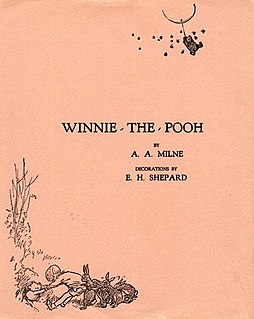
Winnie-the-Pooh (1926) is the first volume of stories about Winnie-the-Pooh, written by A. A. Milne and illustrated by E. H. Shepard. The book focuses on the adventures of a teddy bear called Winnie-the-Pooh and his friends Piglet, a small toy pig; Eeyore, a toy donkey; Owl, a live owl; and Rabbit, a live rabbit. The characters of Kanga, a toy kangaroo, and her son Roo are introduced later in the book, in the chapter entitled "In Which Kanga and Baby Roo Come to the Forest and Piglet has a Bath". The bouncy toy-tiger character of Tigger is not introduced until the sequel, The House at Pooh Corner.

The Tao of Pooh is a book written by Benjamin Hoff. The book is intended as an introduction to the Eastern belief system of Taoism for Westerners. It allegorically employs the fictional characters of A. A. Milne's Winnie-the-Pooh stories to explain the basic principles of philosophical Taoism. The book was on the New York Times bestseller list for 49 weeks.. Hoff later wrote The Te of Piglet, a companion book.
Benjamin Hoff is an American author. He is best known as the author of The Tao of Pooh (1982) and The Te of Piglet (1992). In 2006, he denounced the publishing industry and announced his resignation from book-writing. His book, The Singing Creek Where the Willows Grow, won the American Book Award in 1988.

Welcome to Pooh Corner is a live-action/puppet television series that aired on Disney Channel, featuring the characters from the Winnie the Pooh universe portrayed by actors in human-sized puppet suits, except Roo, who was originally a traditional puppet. The animatronic costumes used for the characters were created by Alchemy II, Inc., headed by Ken Forsse who later created Teddy Ruxpin. The show was first aired on April 18, 1983, the day The Disney Channel was launched. Its timeslot for its early run was at 8:30 a.m. Eastern/Pacific Time, making it the third program of The Disney Channel's 16 hour programming day. Reruns of the show aired on The Disney Channel until May 30, 1997.

Winnie the Pooh and the Blustery Day is a 1968 animated featurette based on the third, fifth, ninth, and tenth chapters from Winnie-the-Pooh and the second, eighth, and ninth chapters from The House at Pooh Corner by A. A. Milne. The featurette was directed by Wolfgang Reitherman, produced by Walt Disney Productions and released by Buena Vista Distribution Company on December 20, 1968 as a double feature with the live-action comedy feature The Horse in the Gray Flannel Suit. This was the second of the studio's Winnie the Pooh shorts. It was later added as a segment to the 1977 film The Many Adventures of Winnie the Pooh. The music was written by Richard M. Sherman and Robert B. Sherman. It was notable for being the last animated short produced by Walt Disney, who died of lung cancer in December 1966, two years before its release.
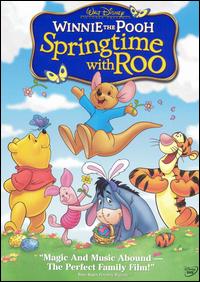
Springtime with Roo is a 2004 American direct-to-video animated musical comedy film produced by Walt Disney Pictures and DisneyToon Studios, and animated by Toon City Animation, Inc. in Manila, Philippines. The film features characters from Disney's Winnie the Pooh franchise, based on the original characters from the A. A. Milne treasured books. Unlike A Very Merry Pooh Year and Seasons of Giving, Springtime with Roo does not reuse episodes from The New Adventures of Winnie the Pooh.
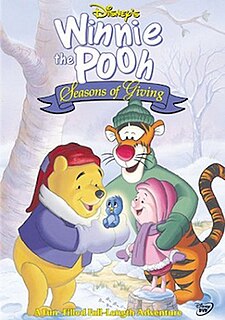
Seasons of Giving is a 1999 American made-for-video animated musical film which included A Winnie the Pooh Thanksgiving, and two episodes from The New Adventures of Winnie the Pooh. It features new songs by The Sherman Brothers, and Paul Winchell as Tigger’s last speaking role.

The Many Adventures of Winnie the Pooh is a dark ride based upon the 1977 film of the same name, itself based on the Winnie-the-Pooh books by A. A. Milne. The attraction exists in slightly different forms at the Magic Kingdom in the Walt Disney World Resort, Disneyland, Hong Kong Disneyland, and Shanghai Disneyland Park. Pooh's Hunny Hunt, located in Tokyo Disneyland, is an enhanced "E-ticket class" attraction, featuring full audio animatronics and a trackless ride system.

My Friends Tigger & Pooh is an American computer-animated children's television series inspired by A. A. Milne's Winnie-the-Pooh. The series was developed by Walt Disney Television Animation, and was executive produced by Brian Hohlfeld.
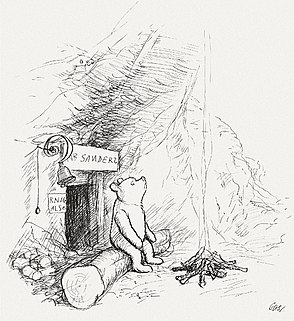
Winnie-the-Pooh, also called Pooh Bear and Pooh, is a fictional anthropomorphic teddy bear created by English author A. A. Milne.

Winnie the Pooh is a 2011 American animated musical comedy film produced by Walt Disney Animation Studios and released by Walt Disney Pictures. The 51st Disney animated feature film, the film was inspired by A. A. Milne's stories of the same name and is part of Disney's Winnie the Pooh franchise, the fifth theatrical Winnie the Pooh film released and the second theatrical Winnie the Pooh feature after the 1977 film The Many Adventures of Winnie the Pooh. It is also Disney's latest animated film using traditional animation as of 2020.
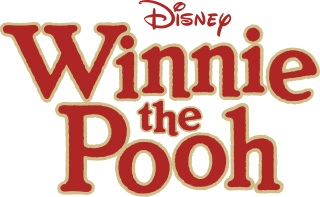
Winnie the Pooh is a media franchise produced by The Walt Disney Company, based on A. A. Milne and E. H. Shepard's stories featuring Winnie-the-Pooh. It commenced in 1966 with the theatrical release of the short Winnie the Pooh and the Honey Tree.
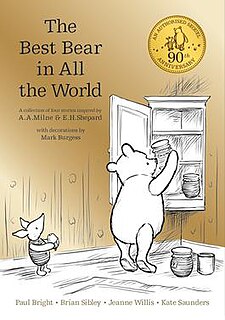
Winnie-the-Pooh: The Best Bear in All the World is the second authorised sequel to A. A. Milne's original Winnie-the-Pooh stories. It was published on 6 October 2016 to mark the 90th anniversary of the publication of the first Winnie-the-Pooh book. The sequel is an anthology of four short stories, each written by a leading children's author. The four contributors are Paul Bright, Jeanne Willis, Kate Saunders, and Brian Sibley. The illustrations, in the style of the originals by E. H. Shepard, are by Mark Burgess. The book attracted national press coverage because of the introduction of a new character, Penguin.
